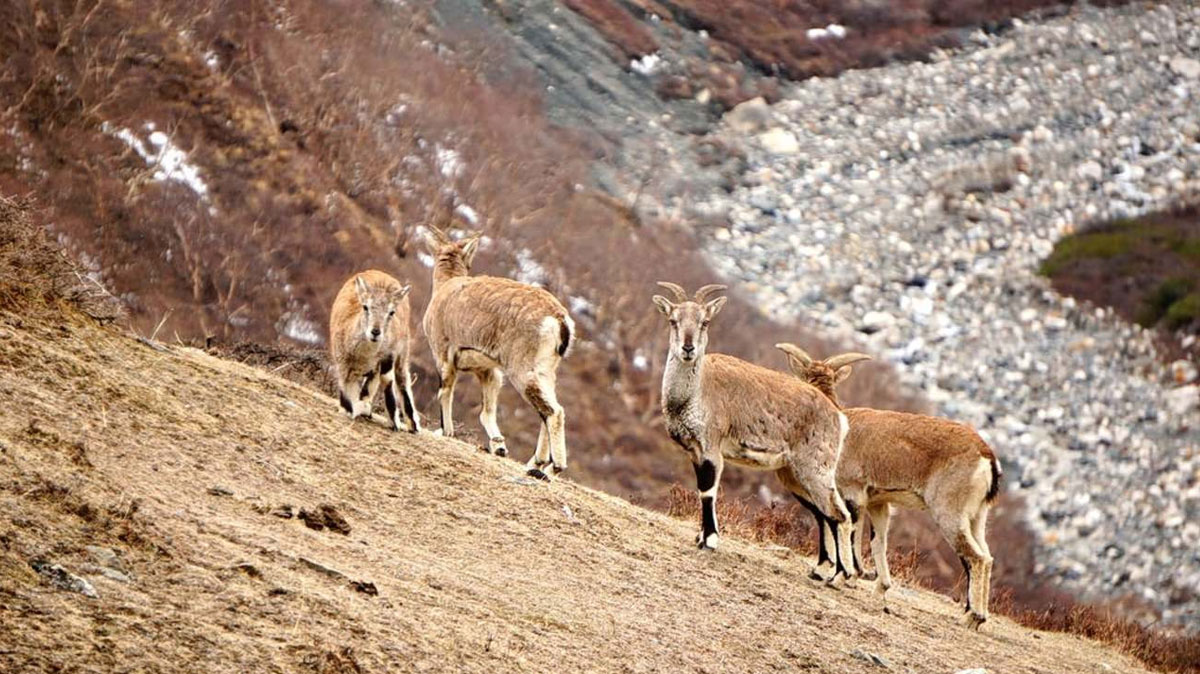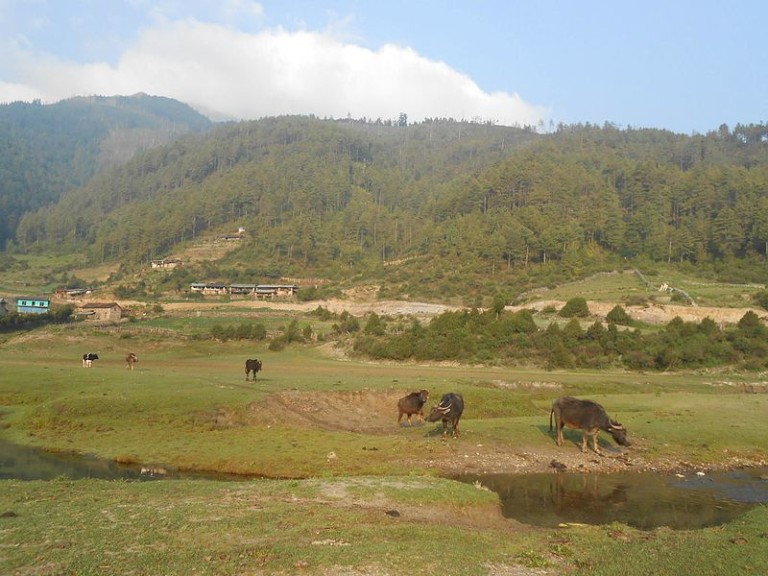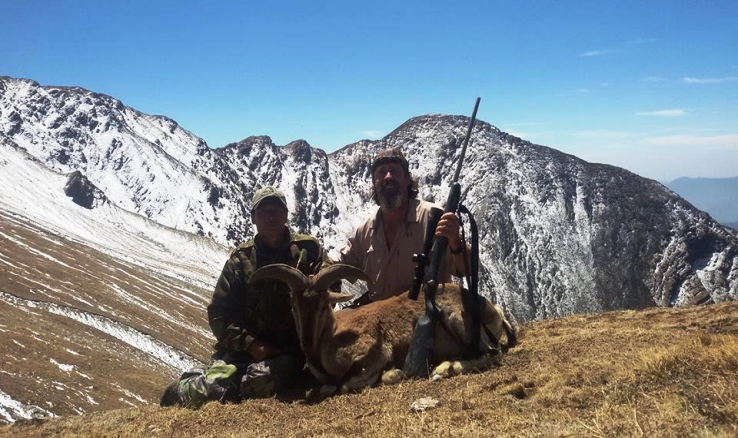- HOME
- Destination
- Adventure Activities
- About Us
- BLOGS
- CONTACT US

In spite of being a small country, Nepal is among the few countries which have managed enough towards the conservation and sustainability of the biodiversity. Nature has gifted Nepal not only with the natural beauties like mountains and waterfalls; there are also many unique species of birds and animals that are found only in certain parts of the globe. Nepal in return has made many efforts towards their conservation. The national parks, wildlife reserves, and the hunting reserves are some of the approaches towards conservation.
Normally, hunting and conservation are the two opposite sides of the coin. However, the only hunting reserve in Nepal; Dhorpatan Hunting Reserve is the proof that the conservation is still possible parallel to hunting. The reserve also offers the tourists with the opportunity to experience a new adventure other than trekking and mountaineering.
The hunting reserve was established in 1987 with the primary objective to facilitate the need of the hunting sport and to conserve the representative species of the temperate, subalpine and alpine ecosystem of western Nepal. The reserve covers an area of 1,352 sq km (512 sq miles) in the Dhaulagiri Himal in western Nepal and extends over the Rukum, Myagdi, and Baglung districts. The altitude ranges from 2,850 m to 5,500 m (9,350 ft to 18,040 ft). The Dhorpatan Hunting Reserve is only the protected area in Nepal which is successful to get a hunting license that is issued by the Department of the National Park and Wildlife Conservation in Kathmandu.
The hunting reserve consists of the forests, marshlands (called dhor) and flat meadows (called patan). The vegetation found in the reserve is alpine, subalpine and temperate vegetation. The snow covers the area all around the year in higher altitudes. 58 vascular plants are recorded in the reserve. The reserve also harbors many species of flowering plants among which 36 are endemic to the reserve. The Oaks: Quercus lantana and Quercus semecarpifolia are the species of the woolly-leaved oaks found in the lower elevation of the reserve. The other common plant species in the reserve include Fir (Abies pindrow), Birch (Betula utilis), Spruce (Picea smithiana), Juniper (Juniperus recurva), Pine (Pinus wallichiana), Hemlock (Tsung dumosa), Rhododendron species and other species of alpine shrubs. The local people residing around the park get the wood for timber and fuel, fodder and the pasture from the reserve. February to October is when living grazing is common in the reserve every year. Almost more than 80,000 livestock enter the reserve for grazing.

The Dhorpatan Hunting Reserve is also home to many species of animals. There are 18 species of mammals recorded in the reserve. Some of them include snow leopard, musk deer, red panda, and blue sheep. 137 species of birds are found inside the Dhorpatan hunting reserve among which koklass pheasant, Impeyan pheasant, and cheer pheasant are common. Moreover, the reserve is also home to 2 species of reptiles. The blue sheep is the most popular species in the Dhorpatan hunting reserve. Other includes goral, serow, rhesus macaque, Langur, and mouse hare. The Musk deer, Wolf, Red panda, Cheer pheasant and Danphe are the endangered species that the Dhorpatan hunting reserve harbors.
The Dhorpatan Hunting Reserve is surrounded by the village except in the North. There are seven hunting blocks in the hunting reserve. There are four blocks in the Southern part and three in the Northern part and each are given a separate name. These divisions are made to make the hunting easy and effective. The following are the seven blocks of the reserve with the animals available for hunting:
-Falguna: Bluesheep and Himalayan Tahr
–Barse: Bluesheep
-Gutsang: Bluesheep and Himalayan Tahr
-Surtibang: Himalayan Tahr
-Seng: Bluesheep and Himalayan Tahr
-Dogadi: Bluesheep and Himalayan Tahr
-Sundaha: Bluesheep and Himalayan Tahr

The winters are very cold due to low temperature and a strong wind blows during the winter. The higher altitudes are covered by the snow in all seasons. The mornings are cloudy which are later removed by the wind during the daytime but the snowfall occurs till early April. The monsoon starts from June until the last of November. It is, therefore, best to visit the reserve somewhere between March to April.
Buses are available that will drop you from Kathmandu to Tansen. The headquarter of the Dhorpatan Hunting Reserve is a three-day trek from Tansen. Also, you can catch a flight to Pokhara from Kathmandu. From Pokhara, a four days trek via Baglung will leave you to the reserve headquarter.
The chartered helicopters can also be managed from Kathmandu to the reserve on your request.
Dhorpatan Hunting Reserve is also preferable for the trekkers. Dhorpatan is a good choice for someone who would like to experience the natural and cultural beauty of remote Nepal. Along with hunting, Dhorpatan hunting reserve offers with the chance to explore the culture and lifestyle of the local native people. The mixture of the Hill tribes and the Tibetan Refugees provides a unique taste of culture. Adding on, the fascinating views of the Dhaulagiri and Annapurna Range are the other attractions of the admirers of nature.
Although the trek is remote, the level of the difficulty is not that high. The trekkers need not be experienced or a professional to accomplish the trek. Anyone in an average level of fitness can find the Dhorpatan trekking comfortable. Plus, the altitudes are not that high enough to cause problems for most of the trekkers. However, precautions to avoid altitude sickness are great. After all, prevention is always better than cure.
Trekking starts from Beni. Beni is about 9 hours drive away from Kathmandu. Passing the Trishuli and Marsyangdi River, the trail will take you to the Seti River and then to Pokhara. The next day you will continue your journey and drive to Darbang (about 3 hours). Darbang is famous for the Khukuri (a weapon) skill. But this place is not your destination for today. You still have to walk about 5 hours to reach Dharapani, where you will spend the night. The Dhaulagiri stands beautifully which can be seen from Dharapani.
The walk on the third day is an easy walk. The view with the streams and the gorges encourage the trekkers to walk ahead. The 6 to 7 hours walk on the beautiful trail will take you to Lamsung: the destination of the day. Next day walking through the forest of the Rhododendron and Oaks, you will be targeting for Jaljala. The 6 to 7 hours trail provides you with the beautiful views of the Dhaulagiri, Gurju Himal, Churen Himal, Putha Himal etc.
The new morning now calls you to explore the Dhorpatan Hunting Reserve. Descending through the Khahare Khola and crossing the mixed forest, you now reach to Dhorpatan after a 7 hours walk. Enjoy your stay at Dhorpatan. The next day you will explore the reserve. Different animals like Leopard, Ghoral, Himalayan Tahr, Black bear, Barking deer, and many birds can be seen. The mixed culture of the hill tribes and the Tibetan will attract you with their traditional way of living and trade. The wooden roofed houses are another attraction of the place.
The early next morning trekking to the Phagune Danda will attract you with the beautiful Himalayan ranges, jungles, and landscapes. Further on, the trek continues to reach the Jungle camp. The following day, we will be walking about 6 hours to reach the Gurhaghat. The trail is an easy walk along the flat land with mixed jungle and streams. Overnight at Gurhaghat.

The trekkers today will ascend in the beginning and then descend through the jungle and gorges. After the walk of about 6 hours, you will now reach Patichaur; today’s last spot. The next morning will be the last day of the trek.
From Patichaur the trek now starts to reach Darbang. The first two hours are not quite hard. Continuing the trek, you will now go ascending and descending through the jungles and the gorges. As you get up to the Darbang, you can now drive to Beni. It will take around three hours to reach Beni. The forest, green hills, rivers, and the streams are the real attraction of the drive.
Thus, this ends the trek to one and only hunting reserve in the country. From Beni, you will now drive back to Pokhara. Enjoy the stay in the beautiful city of lakes and then head back to Kathmandu.
Your email address will not be published.Required fields are marked *
You must be logged in to post a comment.
0 Comments on "Dhorpatan Hunting Reserve: The Only Hunting Reserve in Nepal"